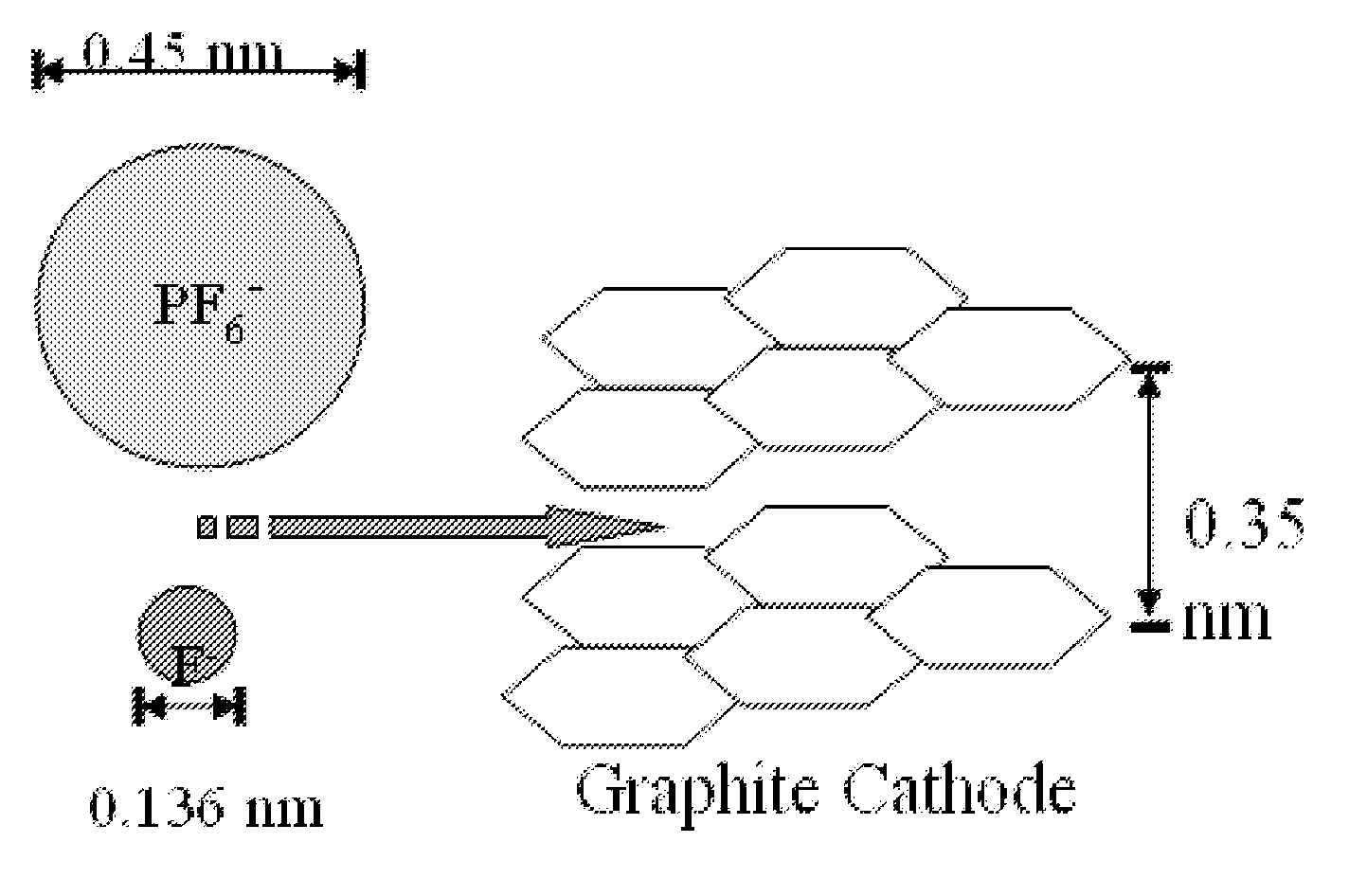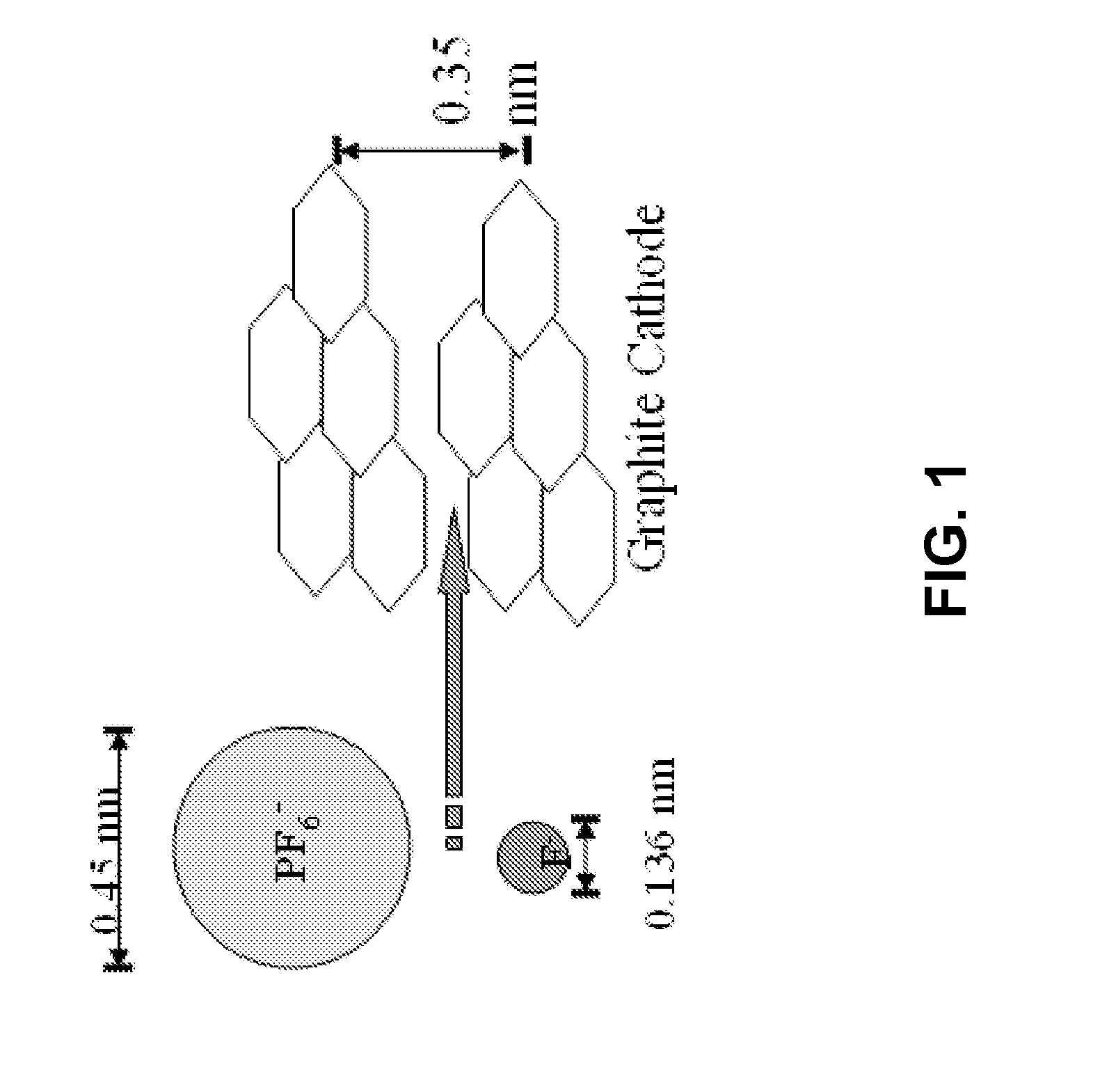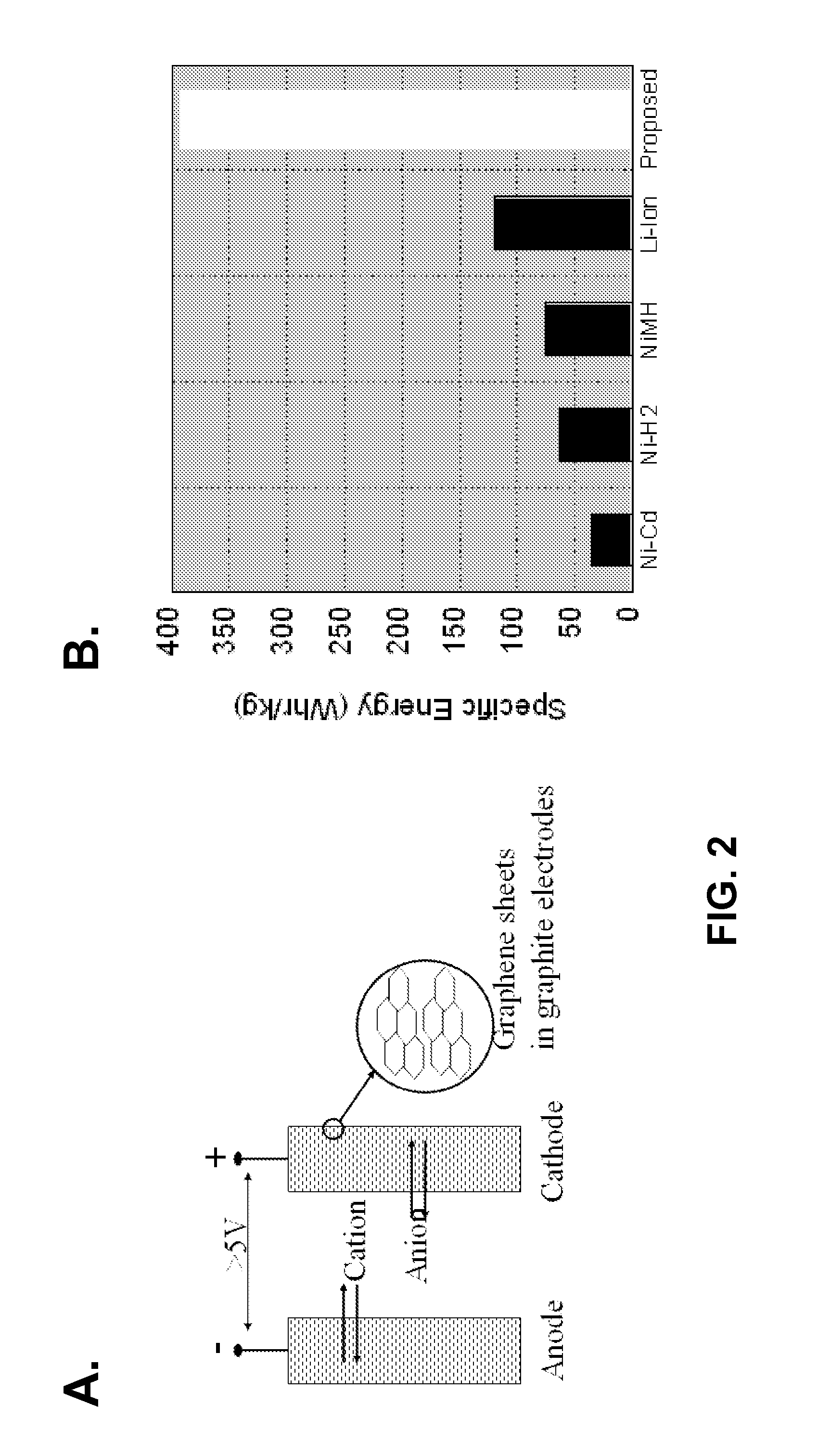High Voltage and High Specific Capacity Dual Intercalating Electrode Li-Ion Batteries
a dual-intercalating electrode, high specific capacity technology, applied in the field of rechargeable batteries, can solve the problems of graphite exfoliation and loss of electrode function, inability to (dis)charge at high rates, and loss of anion provided by the electroly
- Summary
- Abstract
- Description
- Claims
- Application Information
AI Technical Summary
Benefits of technology
Problems solved by technology
Method used
Image
Examples
example 1
High Specific Energy Batteries with Halide Anion Intercalating Cathodes
[0090] Although others have examined dual intercalating cells (nonaqueous, non-molten salt variant), the best results to date (high cell voltage (5V), poor cyclability (<100), good capacity (100 mAh / g to 1.0V) are constrained by: massive anion (see FIG. 1); high salt concentrations resulting in large viscosity / low conductivity electrolyte properties; poor solvent stability (at 5 to 6V versus Li); questionable salt stability; deep discharge.
[0091] The batteries of the present invention have high cell voltage, high theoretical specific capacity, and generally inexpensive components. Cell voltage depends on salt type and concentration:
−eV=μLi0+μA−μ0Li+−μ0A−−2kT ln[Li+]
[0092] In practice, kinetics (e.g. rate of charge and discharge) will dictate voltage and correspondingly different strategies are employed for specific cell optimization.
[0093] The batteries of this example are high voltage, high specific capacity ...
example 2
Effect of Anion Receptor on Battery Characteristics
[0119] This example is associated with the development of a new battery chemistry that operates at higher voltages with larger specific capacities than other battery systems. Quantitatively, the improvement in specific energy (a function of cell voltage and specific capacity) for the batteries of the present invention is theoretically more than a factor of three greater than state-of-art lithium-ion (Li-ion) batteries. This increase in battery specific energy represents the single largest improvement in battery performance compared to previous developments in battery technologies over the past 40 years. The practical specific energy (taken as 30% of theoretical specific energy) of the proposed battery chemistry is 410 Whr / kg compared with state-of-art Li-ion batteries at 120 Whr / kg.
[0120] The batteries of the present invention are particularly useful in spacecraft, where batteries constitute up to 33% of spacecraft power system ma...
example 3
Dual Intercalating Carbonaceous Electrodes.
[0139] Almost all of the cells of the previous examples for the anion intercalating battery use a lithium metal counter electrode. The lithium metal acts as an effective getter for most undesirable contaminants in the cell, including water. These contaminants can reduce the performance of the anion intercalating cathode.
[0140] However, a preferred embodiment of a practical anion intercalating battery uses a carbonaceous (e.g., graphite or coke) anode in place of the lithium metal since a carbonaceous anode has better long term cycle life than lithium metal when the level of contaminants in the cell is very low. The anion intercalating cell functions sufficiently well when a coke anode is used in place of the lithium metal anode.
[0141]FIG. 28 shows the 49th charge / discharge cycle of an anion intercalating cathode cell incorporating a coke anode. This performance (in terms of cell voltage as a function of specific capacity) is on par with ...
PUM
| Property | Measurement | Unit |
|---|---|---|
| Molar density | aaaaa | aaaaa |
| Molar density | aaaaa | aaaaa |
| Electric potential / voltage | aaaaa | aaaaa |
Abstract
Description
Claims
Application Information
 Login to View More
Login to View More - R&D
- Intellectual Property
- Life Sciences
- Materials
- Tech Scout
- Unparalleled Data Quality
- Higher Quality Content
- 60% Fewer Hallucinations
Browse by: Latest US Patents, China's latest patents, Technical Efficacy Thesaurus, Application Domain, Technology Topic, Popular Technical Reports.
© 2025 PatSnap. All rights reserved.Legal|Privacy policy|Modern Slavery Act Transparency Statement|Sitemap|About US| Contact US: help@patsnap.com



